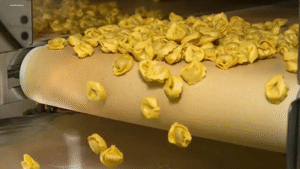The word Pabington isn’t just a name — it’s an invitation. You may have seen it dropped in online conversations, featured in obscure digital art, or attached to usernames that give off a sense of quirky mystery. Yet, no one seems to agree on what it actually is. In this article, we’ll explore how Pabington evolved from a nebulous idea into something far greater—how Pabington‘s grew beyond fiction and folklore.
The Mysterious Origin of Pabington
A Ghost in the Web
No one can pin down the first moment Pabington appeared. It seems to have emerged organically in forums, comment threads, or in the depths of digital communities. Some claim it was first used as a nonsensical alias, a playful invented name. Others suggest a more poetic genesis—someone scribbled it in a sketch, then posted that sketch online, and the name caught on.
Because Pabington didn’t start in a textbook or a well-documented novel, its origin has always been speculative. That lack of clarity adds to the allure: Pabington‘s a kind of living myth, open to interpretation and reinvention.
Myth Versus Fact
Over time, various legends grew around Pabington. Some claim it’s a lost place (a hidden village in folklore), others argue it’s an entity or spirit, while in other circles it’s simply a meme-ish aesthetic. Because these versions compete, the community around Pabington doesn’t lean into one “canon”—instead, it thrives on ambiguity.
This tension between myth and fact is key to how Pabington grew beyond simple fiction. It’s not tied down to one story; it invites everyone to build their own.
Why Pabington Resonates in Digital Culture
The Appeal of an Unsolved Puzzle
One reason Pabington caught on is because it’s unresolved. Online culture often gravitates toward mysterious or cryptic symbols—the kind you circle back to, trying to decode them. The more people speculate, the more Pabington‘s spreads. It becomes a shared enigma.
A Canvas for Creativity
Because Pabington doesn’t come with fixed definitions, creators are free to adapt it. Artists sketch landscapes of “Pabington,” designers embed the name into typographic experiments, writers drop references to it in short stories, and meme makers weave it into their jokes. It becomes a kind of open-source mythos: you’re free to remix it, as long as you maintain the spirit of slight mystery.
Social Identity and In‑Group Signals
Adopting a Pabington-adjacent username or reference can signal membership in a niche culture—“I get the reference.” It’s a subtle badge of belonging. People who reference Pabington‘s implicitly nod to others who’ve encountered it. Over time, that builds a loose community, even if many participants don’t communicate directly.
The Transformation from Folklore to Cultural Artifact
From Spoken Word to Tangible References
In early days, Pabington lived only in text—tweets, forum posts, usernames. Gradually, that changed. Digital artists created maps of “Pabington,” imagining landscapes, cityscapes, and internal lore. Others made fonts, writing it in stylized glyphs. Soon you’d see tattoos, stickers, or T‑shirt references. Pabington had stepped out of pure folklore and into real‑world objects.
Lore Expansion by Community
As more people used the name, small legends formed. Someone claims Pabington is a misty moorland. Another says it’s a floating island seen only by dreamers. Some suggest Pabington‘s a portal to alternate digital realms. These bits of lore don’t contradict—they coexist. What you choose to believe is your creative act. This growing lore is co‑created by many voices, making Pabington communal, not authored.
Academic and Media Interest
Eventually indie bloggers and small media outlets began to notice. They wrote retrospectives on Pabington, interviewed people with Pabington-themed art, and discussed how it reflects digital storytelling in our age. Some even speculated on philosophical meanings: is Pabington‘s an expression of postmodern identity, or a comment on authorship and community?
At that point, Pabington was no longer just a meme—it was a subject of cultural commentary.
The Anatomy of Pabington as a Digital Legend
Key Themes and Motifs
Several recurring themes have emerged around Pabington:
- Hidden realms: stories often place Pabington‘s somewhere unreachable through normal means.
- Shifting identity: Pabington is never static. It changes shape, meaning, and name in different contexts.
- Ambiguity as virtue: The lack of clarity is its strength—interpretation is the point.
- Invitation and participation: By engaging with Pabington, you become part of the myth.
Formats and Mediums for Pabington
Pabington shows up in many formats:
- Digital art (landscapes, abstract illustrations)
- Typography and fonts
- Short fiction or microfiction (a passerby in Pabington)
- Social media handles and community “Easter eggs”
- Physical merch and tattoos
- Commentary essays or blogs analyzing it
This diversity makes it resilient—it doesn’t depend on one medium or platform.
Use Cases—How People Incorporate Pabington
Artists and Illustrators
Artists draw scenes of misty hills, surreal city ruins, or floating islands and label them “Pabington.” These visuals give the name a sense of place and atmosphere without prescribing a fixed narrative.
Writers and Storytellers
Writers drop references to Pabington in poems or flash fiction, weaving it into otherwise real settings. For example:
“At dawn I dreamed of steam curling over Pabington’s quay, though I’ve never seen that place awake.”
Because Pabington has no strict canon, these insertions don’t violate any rules—they build upon the myth.
Online Communities and Gamers
Some niche Discord or subreddit communities adopt Pabington as a shared lore. In text‑based games, someone might declare “Your avatar steps into Pabington’s border.” Because there’s no central authority, it’s more play than rule.
Branding, Merchandise, and Personal Expression
Curious creators have made Pabington‘s T-shirts, enamel pins, stickers, and more. Some get Pabington tattoos. People brand their social accounts around the name, using it as a kind of personal mythos.
Challenges and Risks in Myth‑Building
Dilution and Overuse
When too many derivative or low-effort Pabington‘s references appear, the mystique can dilute. If everything becomes Pabington, then nothing is special. The community must maintain a balance—welcoming creativity while preserving some intrigue.
Conflicting Interpretations
Sometimes lore fragments clash. One person might depict Pabington as a haunted cold forest, another as a neon cyberpunk city. Those contradictions can be jarring. Still, many in the Pabington‘s community accept that dissonance as part of the charm.
Being Perceived as an Internet Gimmick
Skeptics sometimes dismiss Pabington as an internet joke without substance. To counter that, people emphasize the experiential, aesthetic, and mythic value. They frame Pabington‘s not as an answer, but as an experience.
Lessons from Pabington’s Growth
The Power of Open Mythology
Pabington‘s shows how myths can live productively in online culture without anchoring to one author or origin. By remaining open, the name continues to evolve organically.
Community as Co‑Author
Rather than creating a locked narrative, Pabington‘s a joint creation. Every new reference—every art piece, story, or font—extends the mythology. That collective authorship is part of its strength.
Mystery Sells (or Spreads)
Ambiguity invites engagement. When people don’t fully know something, they lean in to explore. Pabington‘s benefits from that dynamic; its mystery is its fuel.
Flexible Identity
Because Pabington isn’t rigidly defined, it can morph to fit different creative sensibilities. That flexibility allows it to survive across media, communities, and changing online trends.
What Pabington Means Today—and Tomorrow
A Living Legend
Today, Pabington is both myth and cultural artifact. It’s no longer confined to whispered references—it exists in art, fandom, digital design, and discourse. It has outgrown pure fiction and folklore and entered our material imagination.
Potential Futures
What could Pabington become next?
- A collaborative worldbuilding project or open-source myth database
- A game or interactive art installation exploring Pabington’s spaces
- A full narrative or franchise that embraces multiple contradictory versions
- An academic subject: exploring Pabington in digital myth studies
Whatever path it takes, Pabington is unlikely to become a fixed, single story. It’s likely to remain dynamic, contested, and generative.
How to Engage with Pabington
- Create your version. Write a short flash fiction, sketch a landscape, or name a hidden room “Pabington.” It doesn’t have to align with others—its open-endedness is the point.
- Share with others. Drop a Pabington reference online and see who responds. Maybe someone will remix or reinterpret it.
- Collect lore. Save your favorite Pabington-related works. Observe recurring themes, contradictions, and aesthetics.
- Respect the mystery. Avoid trying to “solve” what Pabington is once and for all. The charm lies in not fully knowing.
Conclusion
From obscure whispers in digital spaces to a full-fledged cultural symbol, Pabington has grown beyond simple fiction and folklore. It offers a shared yet undefined space for creative engagement, where every participant can become a co‑author. The mystery of Pabington makes it powerful—an invitation into possibility. As you engage, you don’t just learn about Pabington—you contribute to it.




